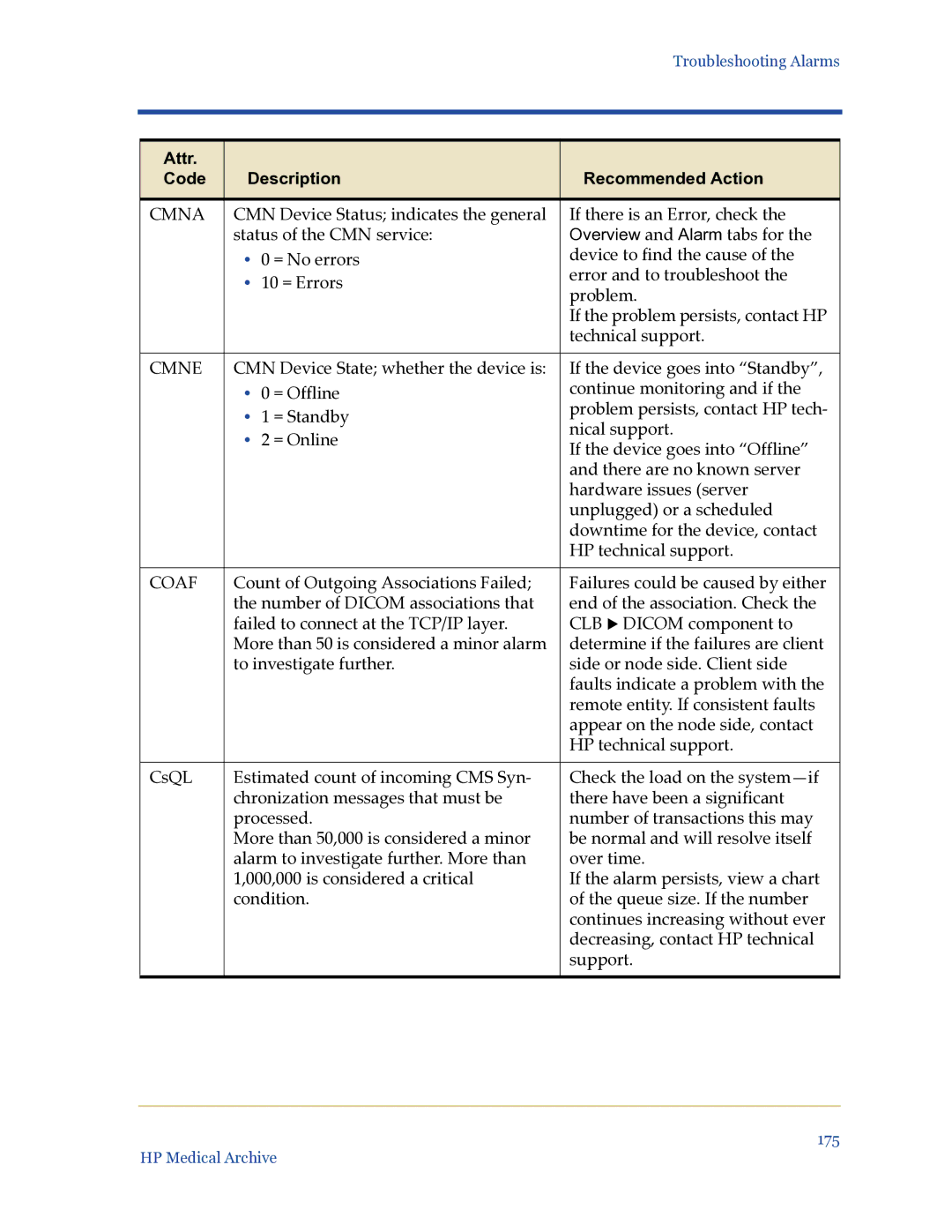
Troubleshooting Alarms
Attr. | Description | Recommended Action | |
Code | |||
|
|
| |
CMNA | CMN Device Status; indicates the general | If there is an Error, check the | |
| status of the CMN service: | Overview and Alarm tabs for the | |
| • 0 = No errors | device to find the cause of the | |
| • | 10 = Errors | error and to troubleshoot the |
| problem. | ||
|
|
| |
|
|
| If the problem persists, contact HP |
|
|
| technical support. |
|
|
| |
CMNE | CMN Device State; whether the device is: | If the device goes into “Standby”, | |
| • | 0 = Offline | continue monitoring and if the |
| • | 1 = Standby | problem persists, contact HP tech- |
| nical support. | ||
| • | 2 = Online | |
| If the device goes into “Offline” | ||
|
|
| |
|
|
| and there are no known server |
|
|
| hardware issues (server |
|
|
| unplugged) or a scheduled |
|
|
| downtime for the device, contact |
|
|
| HP technical support. |
|
|
| |
COAF | Count of Outgoing Associations Failed; | Failures could be caused by either | |
| the number of DICOM associations that | end of the association. Check the | |
| failed to connect at the TCP/IP layer. | CLB X DICOM component to | |
| More than 50 is considered a minor alarm | determine if the failures are client | |
| to investigate further. | side or node side. Client side | |
|
|
| faults indicate a problem with the |
|
|
| remote entity. If consistent faults |
|
|
| appear on the node side, contact |
|
|
| HP technical support. |
|
|
| |
CsQL | Estimated count of incoming CMS Syn- | Check the load on the | |
| chronization messages that must be | there have been a significant | |
| processed. | number of transactions this may | |
| More than 50,000 is considered a minor | be normal and will resolve itself | |
| alarm to investigate further. More than | over time. | |
| 1,000,000 is considered a critical | If the alarm persists, view a chart | |
| condition. | of the queue size. If the number | |
|
|
| continues increasing without ever |
|
|
| decreasing, contact HP technical |
|
|
| support. |
|
|
|
|
175
HP Medical Archive
